
Shared rituals, practices and tools in interlocking living systems
from the presentation of the workshop:
“Parallèle is joining forces with Lieux Publics and FAI-AR for a space-laboratory led by artists who have made responsibility for contemporary ecological emergencies central to their practice: DOM-, Anne Lise Le Gac, Louise Nicollon des Abbayes.
From 5 to 9 February 2024, they designed and led workshops for 22 artists, including FAI-AR apprentices and students from the Beaux-Arts de Marseille-INSEAMM. Relationships with social and political contexts, landscapes and energy limits, the reuse of materials, questions about and lasting transformations of everyday practices, discussions between the artists and the venue hosting them... These are just some of the subjects explored during these days of experimentation at the Cité des Arts de la Rue.”
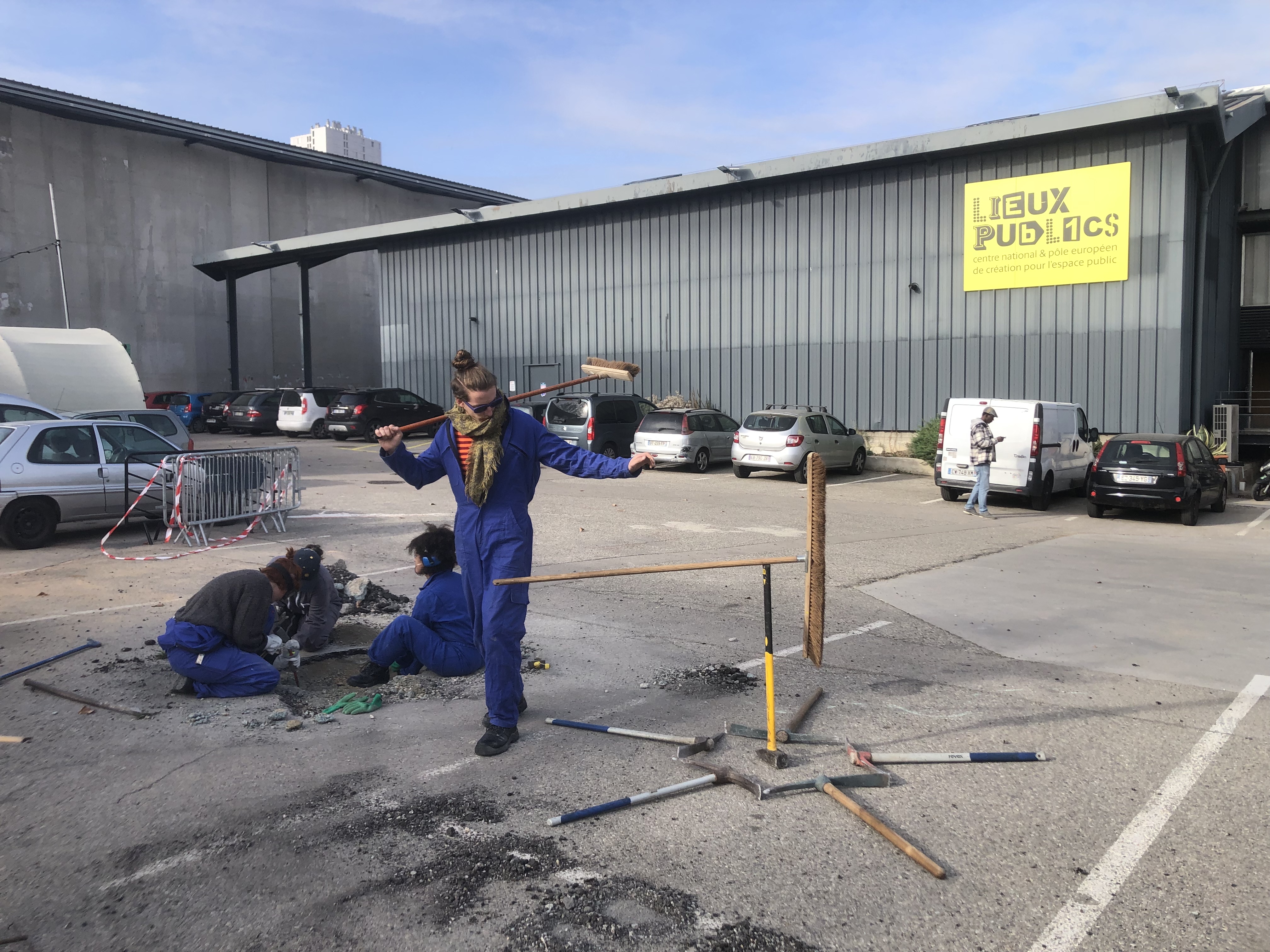 | 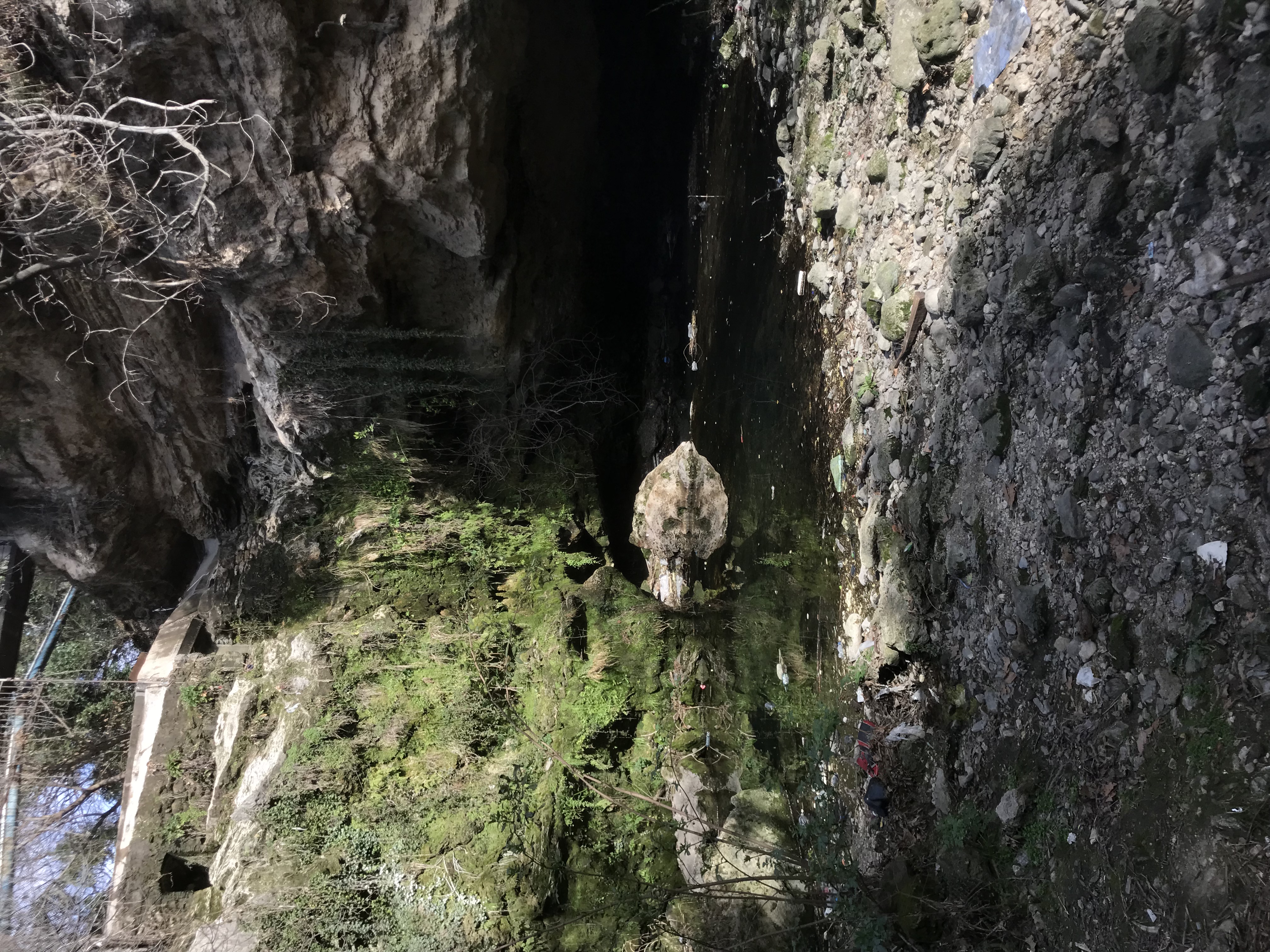 |
The workshop aimed to offer participants an experience of the relationship between ecological issues and artistic practices.
Over the course of five days, the group worked on a process of co-creation of a space that we called "archipelago" in which the connection between ecology and art was experienced through different levels of energy and engagement.
The islands that made up the archipelago were as follows:
> the hole: the physical creation through different types of tools of a hole in the asphalt of 'la citè des arts de la rue'. The hole was the tool to talk about the underground dimension, the ability of a group to create something out of the reach of the individual, the subversive dimension of the artistic gesture.
> the picnic: an experimentation zone for motor practices linked to being, to contemplation, to the transformation of the sensory apparatus to perceive the world differently and thus think differently about it. the picnic is also the assembly hall
> the radio: a system for collecting auditory data and texts that were daily broken down, aggregated, revisited, and re-introduced into the archipelago through a system of speakers.
nomadic within the archipelago was instead a choreographic device aimed at translating what was happening into gestures and conveying energy during the activities.
The workshop was in two parts: in the morning we dedicated ourselves to somatic and speculative fabulation practices.
At the same time, in the afternoon we went outdoors to practice archipelago in the space dedicated to it.
On the last day, there was a form of restitution to the public in which we shared the practices and the work done for two hours.
What follows is an image narrative of the experience.
the images and video were taken by workshop participants
 | 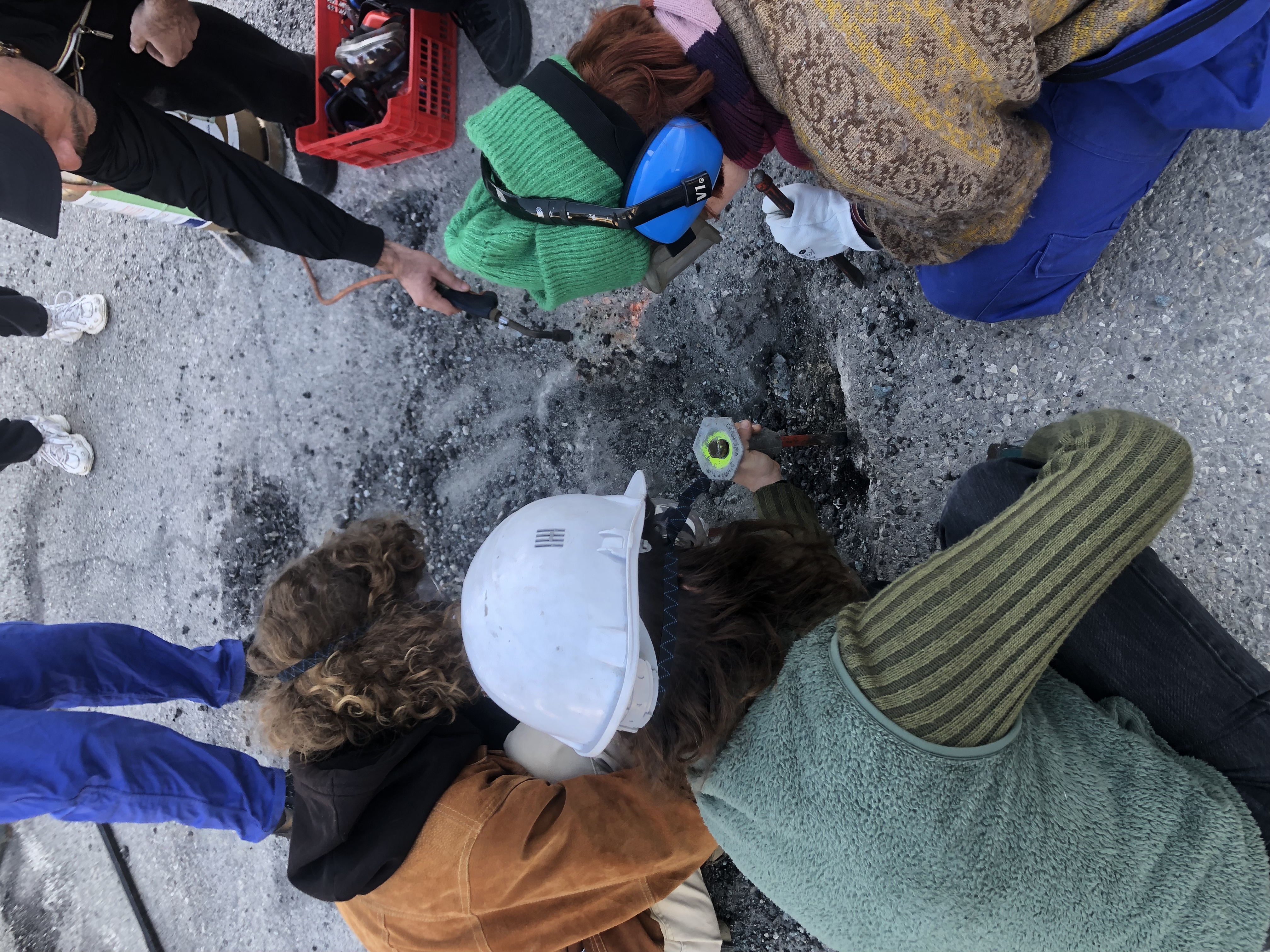 | 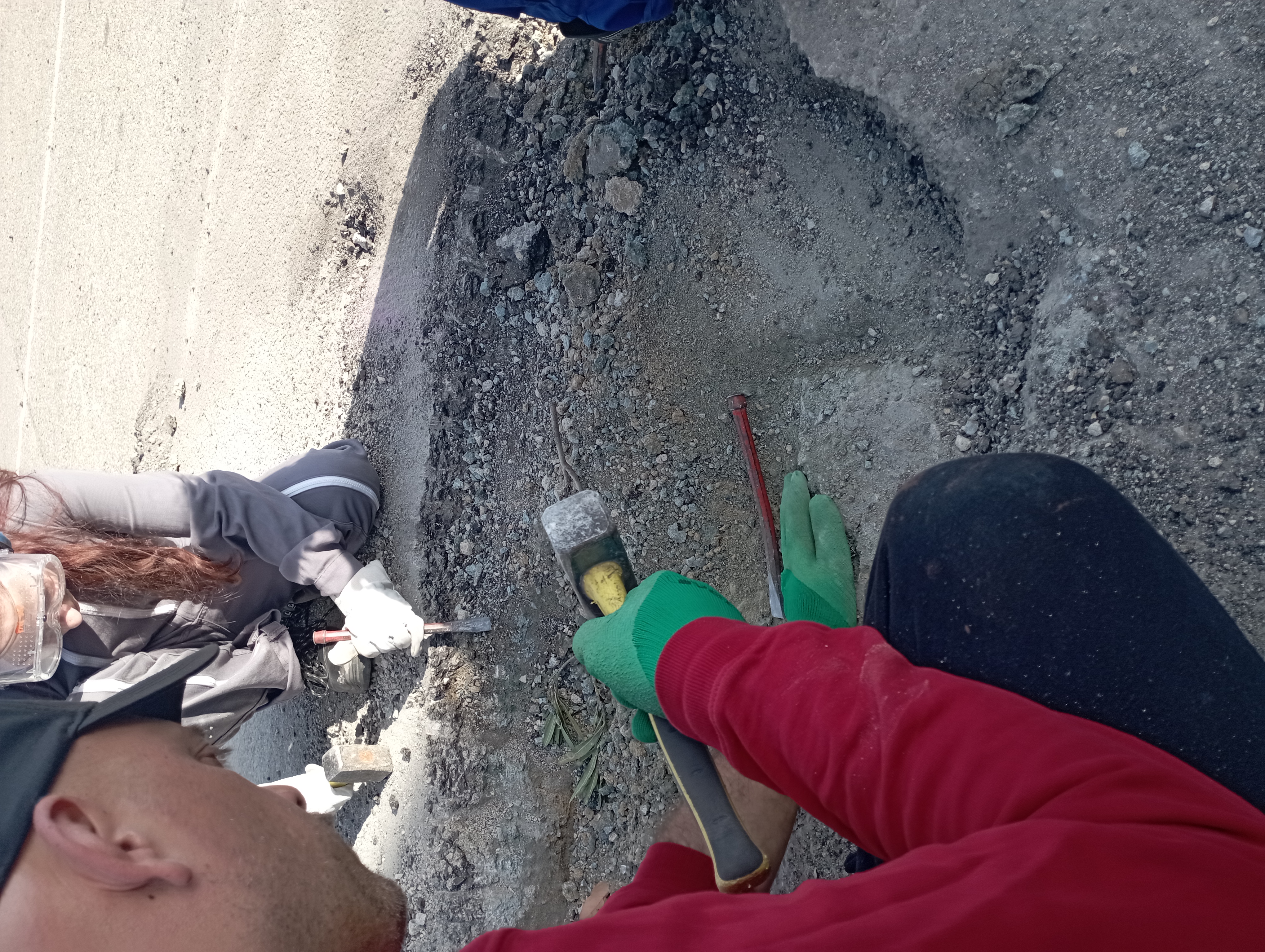 |
DONNA HARAWAY - SPECULATIVE FABULATION (S.F.) Narration Speculative in French translates for me into the English Speculative Fabulation, and the difference matters because the connotation of “narrative” in English is not as open as “narration” is in French, and Speculative Narrative in English has already been occupied by a particular branch of literary critical theory which I am not very drawn to. There are some thinkers and writers that think I’m against it in some ways, but it’s not what i mean, because what i mean by Speculative Fabulation or Narration Speculative in French – but not in English – is much more closely tied to the everyday storytelling practices of storytellers who aren’t all writers, who aren’t all professionals. [It’s more related to] the way mothers and fathers still tell stories to their children, or the way someone tells the story of their life to a reporter, or the way Emily Carr writes her stories, or the way Ursula Le Guin does her work. I think the Speculative Fabulation as this fabulating, this making, this fabulation, the fable as a place… – one of my former graduate students, Martha Kenney, talked about “wild facts”, facts that won’t hold still. Wild facts inhabit fables, and the fable is a really important form, and fabulation is the making of a fable, and Speculative Fabulation - not “narrative” as it’s been domesticated in literary theory, but the fabulation, the worlding - which is often full of animals and full of critters who maybe don’t really exist, I don‘t know, full of creatures of the imagination, full of children and animals and creatures of the imagination and impossibile worlds but also full of adults, full of the serious Speculative Fabulation of the science-fiction, speculative feminism fantasies, the speculative fantasy of an Ursula Le Guin. So for me S.F. is absolutely a critcal germ, a seed, a rep in a point of eruption of my own work. As you know I’m a scholar, I’ve made my living as a scholar, I live in this house beacuse I was paid as a scholar, you know, I would be foolish, stupid, to disown it, that is my profession and I practice my profession as a fabulator, and by that I do not mean I don’t tell the truth, you know, beacuse I care, among other things, I care about what’s a fact and what isn’t, how it holds together or does not. I believe that teaching intelligent design in a biology class in high school is a kind of child abuse, and I think evulotionary theory is [the basis], you know, I would enforce it with the law if necessary, and by which I mean I will take in part of curriculum struggle with the publishers or with the school districts. So I will fight for something that I think is so, some ways of life and not others, and I don’t think that is instead of being a fabulator, I think this is about taking Speculative Fabulation seriously. Most of my biologist friends are very upset with that language, they really want you to be for “science is the truth, and this other stuff isn’t it, and you talking about fabulation and the like is really wrongheaded, really crazy”, you know, I say “no, no, no, we need to talk about Speculative Fabulation and science fact in the same S.F. figure”. So that’s how I use it. | 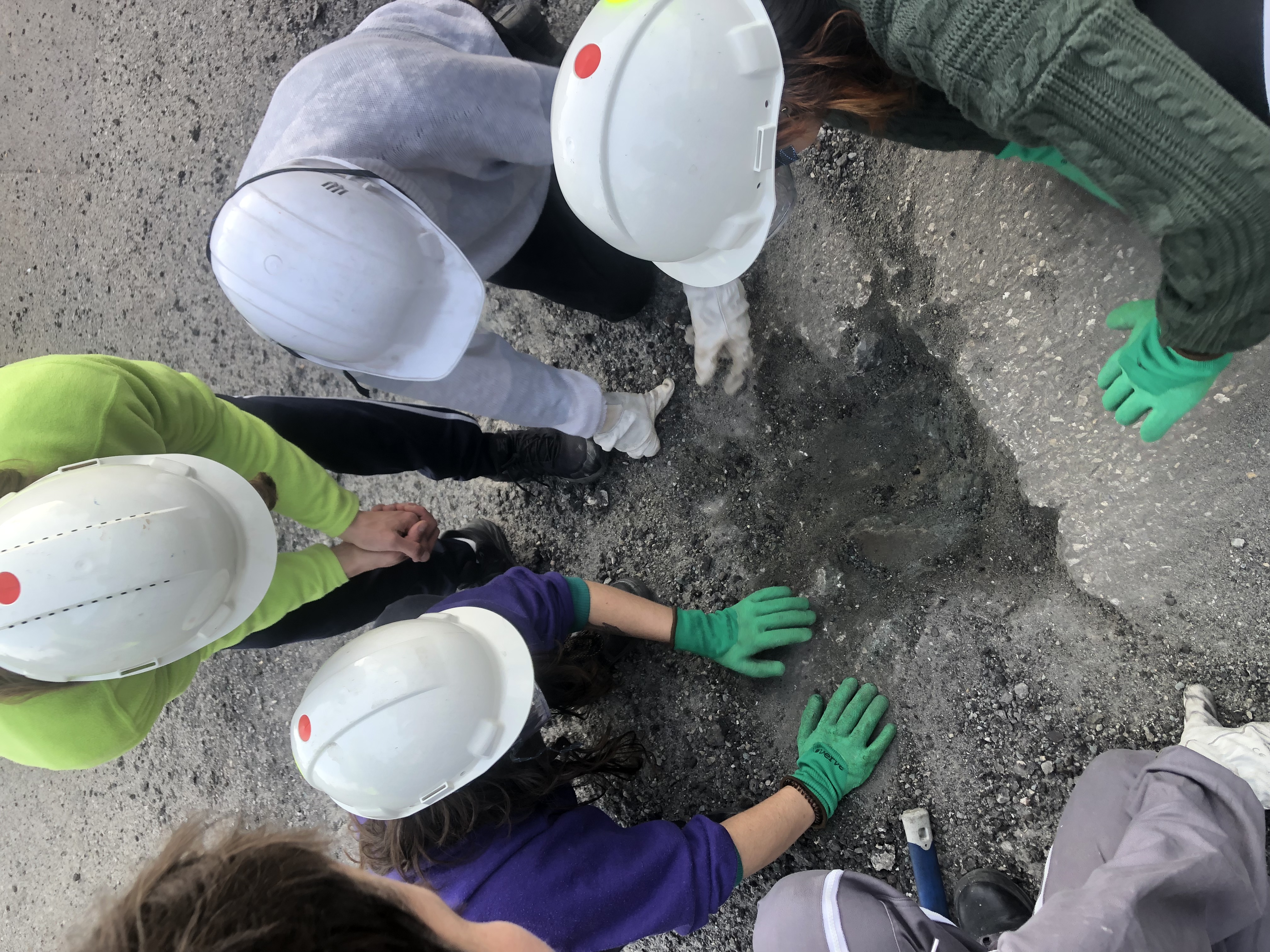 |
 |
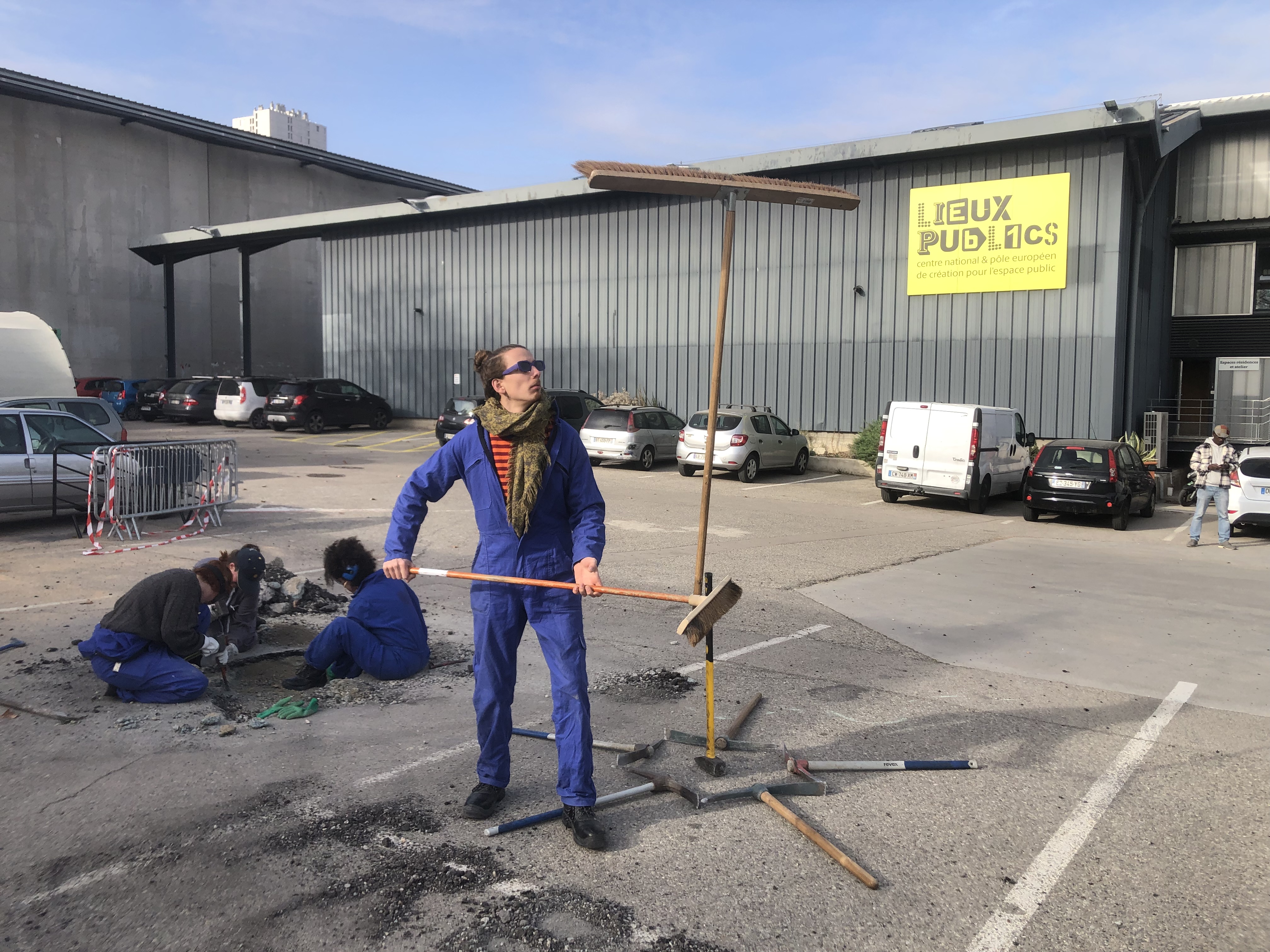 |  |

